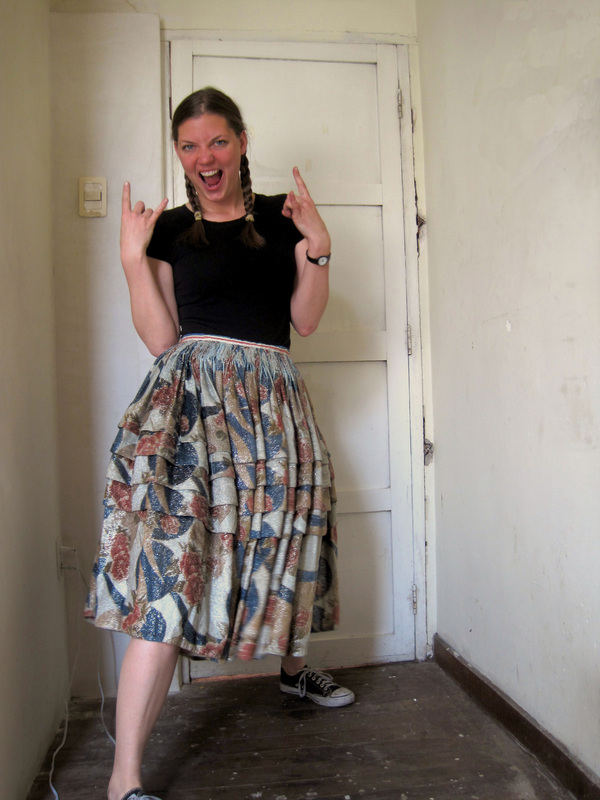Sure, seeing a gringa in a pollera might be just as amusing for Bolivians as the “cholitas luchadoras” are for the foreigners that flock to their shows. But that doesn’t mean that I have a right to wear one. As Jaya Bedi writes so eloquently, “The political context in which cultural symbols exist is important. Cultural appropriation happens — and the unquestioned sense of entitlement that white Americans display towards the artifacts and rituals of people of color exists too. All ‘appropriation’ is not merely an example of cultural sharing, an exchange between friends that takes place on a level playing field.”
And I think my position is actually strengthened by the time I did wear a pollera (outside of the ring). When I appeared at Shirley’s party in a pollera and Gonz shouted “cholita punk.” My friends were amused because my representation was ironic. As I write in my dissertation (I think it’s still in there, but Cholita Punk was sadly cut), “Irony often functions as a ‘frame shifting’ mechanism (Coulson 2001) in order to express humor. When I entered the party wearing a pollera, Gonz shouting ‘cholita punk’ shifted the frame from the representation of cholitas as traditional and thoroughly Bolivian icons, to something integrated with the international youth culture of punk rock. Even my own laughter at wearing the pollera and braids played on the disjuncture of a U.S. gringa in clothing with cultural meaning in the Andes. And most certainly, when Luis suggested I wrestle, irony was used to disrupt the usual interpretation of a mujer de pollera.”
Again I refer to Bedi, who writes, “If the use of the bindi by mainstream pop stars made it easier for South Asian women to wear it, I’d be all for its proliferation — but it doesn’t. They lend the bindi an aura of cool that a Desi woman simply can’t compete with, often with the privilege of automatic acceptance in a society when many non-white women must fight for it.” To paraphrase her, what makes a white woman’s use of the pollera problematic is the fact that a gringa wearing one is guaranteed to be better received than if a Bolivian woman were to step out of the house rocking one. On me, it would be a bold new look (sure to catch lots of stares, but no one’s going to shew me away from a fancy restaurant). On a Bolivian woman it’s yet another marker of her Otherness. A symbol of her failure at whiteness, at cosmopolitanism, to participate in a global citizenship.



 RSS Feed
RSS Feed
